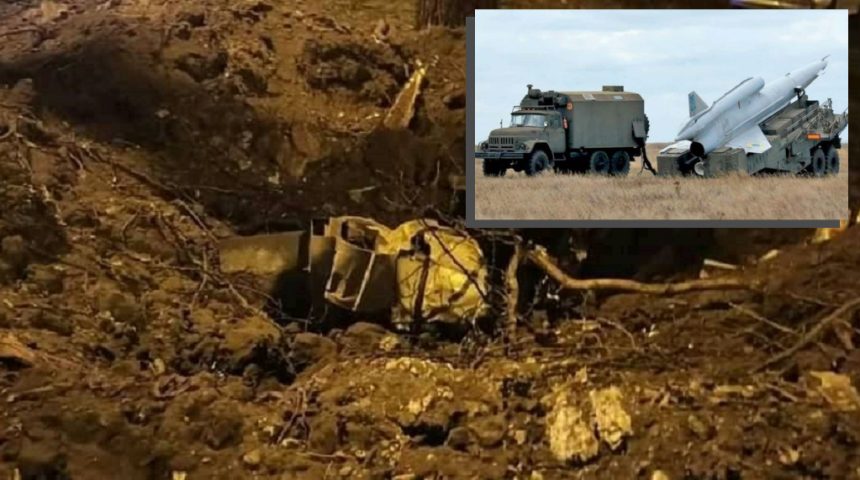The mysterious drone probably flew all the way from Ukraine to Croatia after the control signal was lost, crashing when it ran out of fuel.
An explosion rocked Zagreb (Croatia) at around 23:00 local time on March 11, 2022, triggering fear among the population. The emergency services then found a crater 3 m wide and 1 m deep with the remains of a “pilotless military aircraft”, with some witnesses stating that it was a plane that crashed after the crew ejected and parachuted down to safety.
A press release from Croatia’s presidential office quotes President Zoran Milanovic stating the aircraft entered Croatian airspace after flying undetected over Hungary for over 40 minutes. The drone then flew less than seven minutes in the Croatian air space, and crashed in the Jarun neighbourhood. The statement continued saying that the drone flew in from Ukraine flying at over 500 knots and at 1,300 meters (about 4,000 feet) of altitude.
One parachute found near chrash site. pic.twitter.com/bOIDdMfT7P
— Based 🇫🇮 (@Based_FIN) March 11, 2022
According to the first investigation reports released from Croatia, the drone lost the control signal and flew until it ran out of fuel. Meanwhile, Hungarian sources said it arrived in their airspace via Romania, again without being detected by air defenses. The event is being treated as a serious incident and Croatia launched an investigation to try to understand how an old Soviet-era drone was able to fly undetected through NATO airspace.
The War Zone’s Tyler Rogoway, after close examination of the visual evidence, strongly believes this drone was actually a Tu-141 “Strizh” reconnaissance drone that must have severely malfunctioned. Nobody knows if it was launched by Ukraine or Russia at this time, but some accounts state it had Russian red stars on it. Even more confusion is added to the mix by sources from the Ukrainian military which said the drone did not belong to them.
The drone that crashed in #Zagreb last night came into #Croatia from Hungary flying at 700km/h at altitude of 1300 meters.
No casualties reported, still unclear who launched the soviet-era drone. pic.twitter.com/fFMWjBr2EG
— Based Croatia (@Based_Croatia) March 11, 2022
The Tupolev Tu-141 Strizh is a Soviet reconnaissance drone that historically served with the Soviet Red Army during the late 1970s and 1980s, before being retired in the early 1990s. In 2014, Ukraine “resurrected” the drone after the invasion of Crimea, since large stocks of it remained in its territory following the fall of the Soviet Union.
Some Tu-141s were reportedly operated during these last two weeks, with at least one while being shot down as seen in photos on social medias. Again, it is not possible to verify who is really operating the drones, as some sources mentioned the presence of the “Z” symbol which was seen on many vehicles since the beginning of the invasion.
#Ukraine: We have managed to identifiy new wreckage, and can confirm a Ukrainian drone was shot down!
However, it’s not the TB-2, but the Cold war era Tupolev Tu-141 reconnaissance drone; note the landing gear/KR-17A engine.
Likely to be UA operated, but possible Russian decoy. pic.twitter.com/MOP454BWPH
— 🇺🇦 Ukraine Weapons Tracker (@UAWeapons) March 8, 2022
The Tu-141 is a relatively large, medium-range reconnaissance drone, designed to undertake reconnaissance missions several kilometers behind the front lines at transonic speeds. Among its payloads, it can carry a range of film cameras, infrared imagers, EO imagers, and imaging radar. Some of these payloads are reportedly shared with the recon variant of the Su-24 Fencer.
As with previous Tupolev designs, the Tu-141 has a dart-like rear-mounted delta wing, forward-mounted canards, and a KR-17A turbojet engine mounted above the tail. It is launched from a trailer using a solid-propellant booster and lands with the aid of a tail-mounted parachute and retro rockets, which could explain the reports about the drone being shot down and the parachutes found on the scene.
In 2014, a Ukrainian Tu-143 Reys, a type of drone developed from Tu-141 but smaller and with a shorter operational range than the Strizh, was recovered, almost intact, by pro-Russia separatists in a field in Ukraine.
Update
It looks like that contrary to the initial Croatian press release, both Romania and Hungary detected the drone.
Press release
The Romanian air surveillance system picked up the signal of a low surface aircraft, Thursday March 10, most probably an UAV, that crossed the national air space for a very short time, under three minutes.https://t.co/iKZ6y59Wcq
— MApN (@MApNRomania) March 11, 2022
The Croatian Army identified the drone as Tu-141 Type 2.
Officer of the Croatian army said the drone was identified as Tu-141 Type 2.https://t.co/Cajw68VPLw
— Goran (@6o_r4n) March 12, 2022









